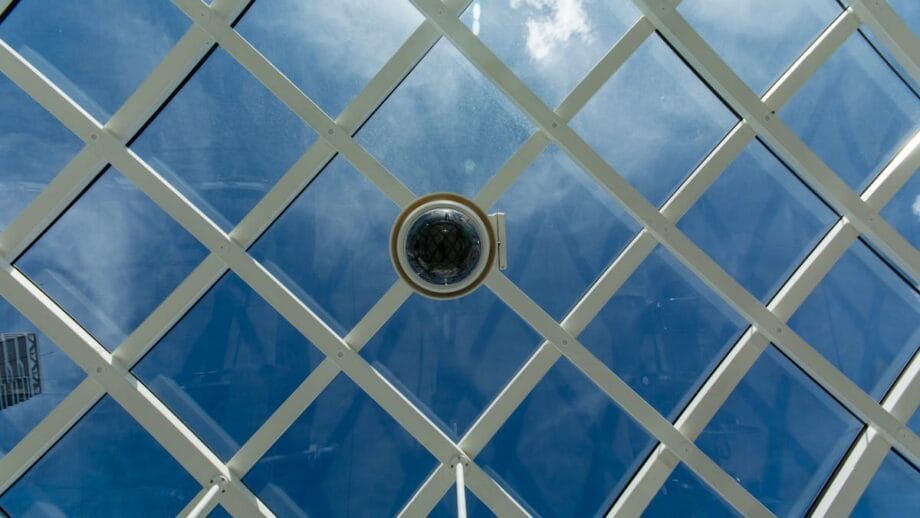Are you worried about keeping your home or business safe? You’re not alone. Many people look for ways to protect their places from intruders. One smart way to do this is by using motion detectors.
These gadgets sense movement and can alert you when someone is where they shouldn’t be.
Motion detectors are a key part of security systems. They use technology like infrared sensors and microwaves to spot any unexpected activity. Whether it’s a person trying to sneak in or just a pet moving around, these devices know the difference.
Our article will show you how motion detectors work, the different kinds available, and how to choose the right one for your needs.
Ready to learn more? Let’s get started!
The Importance of Motion Detectors for Home and Business Security

Motion detectors play a big role in keeping homes and businesses safe. These gadgets sense when someone is moving around where they shouldn’t be. Think of it like having an extra set of eyes that never get tired or need to sleep.
I’ve seen firsthand how a motion sensor can alert you before an intruder gets too far. It’s not just about triggering alarms; it’s also for peace of mind, knowing your place is monitored all the time.
This tech has come a long way too. Now we have Passive Infrared Detectors (PIRs) and microwave sensors that do an even better job at spotting unwelcome guests without setting off false alarms every time a pet moves across the room.
Getting alerts on your phone means you’re always in the know, no matter where you are. That’s security and convenience hand in hand.
Historical Evolution of Motion Detection Technology
The story of motion sensors starts in World War II. Back then, the goal was to find enemy planes. Samuel Bagno, a smart guy, used radar ideas to make an ultrasonic alarm in the mid-1940s.
This was big because it showed how sound waves could tell us when something moves.
After the war, things got even better. Technology took a huge leap forward. Radar got better for military stuff. Then came infrared tech for everyday use. Now we had ways to detect movement without anyone knowing.
These steps were key in making today’s burglar alarms and security systems work well.
Different Types of Motion Detectors
Delving into motion detectors is akin to unboxing a collection of devices. Each variant possesses its own method for detecting movement. There are various methods, ranging from sensors sensitive to body heat to others employing sound or even radio waves, perfect for detecting any surreptitious activity.
If you’re interested in understanding the functionality of each and identifying their unique features, continue your reading!
1. Passive Infrared (PIR) Sensors
PIR sensors are a big deal in home security. They work by spotting the heat and movement from our bodies. This way, they know if someone is there when they shouldn’t be. You find them in things like alarm systems and automatic lights.
“These handy devices make life safer and easier.”
But, they’re not perfect. Sometimes, sunlight or gadgets can trick them into thinking there’s motion when there isn’t.
Also, PIR sensors help out by ignoring pets. Because of this feature, your dog won’t set off the alarm every time it walks by. People love using PIR sensors because they use very little power and are very good at detecting humans without mistakes.
They fit well in both homes and businesses for keeping an eye on things without needing someone to always watch over them.
2. Microwave Motion Sensors
Microwave motion sensors work by sending out microwave energy. This type of energy moves through air and even walls. When something moves, it changes the wave pattern of the microwaves.
The sensor notices this change and can tell when there is motion. These sensors are great for covering big areas because they can see through obstacles.
Yet, these sensors have their downsides too. For one, they might pick up small movements that aren’t important, like a curtain moving in the wind. To fix this, you can adjust how sensitive they are.
This means they won’t react to tiny movements but will still catch bigger ones that matter for security.

3. Dual Technology Motion Sensors
Moving from microwave sensors, we find dual-technology motion detectors. These nifty gadgets mix PIR and microwave tech to catch movement.
Here’s the cool part: they only ring the alarm if both types spot something moving. This means fewer false alarms – like when your cat decides it’s showtime at 3 AM.
So, where do these come in handy? Picture places with lots of windows or a big room that gets super hot or cold. Just one kind of sensor might get tricked by sunlight or a draft. But put them together, and you’ve got a solid system that’s harder to fool.
The price tag reads high – quite the jump from its original – but worth it for peace of mind.
Yet, there’s a small hitch: because these sensors are so careful, sometimes they might miss sneaky movements or take longer to sound off an alert than single-tech types would.
4. Ultrasonic Motion Sensors
Let’s shift gears to ultrasonic motion sensors. These gadgets are pretty cool because they send out high-frequency sound waves that you and I can’t hear.
Imagine throwing a ball against a wall; if it comes back to you, the wall is there. Ultrasonic sensors do something similar to sound waves. If these waves bounce back, it means there’s something moving around.
I once played around with a Misty II robot that had these sensors built in. It was like giving the robot superpowers to see its surroundings without eyes. This tech achieves about 70% accuracy in figuring out which way things are moving – not perfect but still impressive.
Ultrasonic motion detection works great for spots where other sensors might trip up, like automatic door openers or lighting systems that turn on only when someone is actually there – saving energy and cutting costs.
But it’s not all smooth sailing; think of them as delicate equipment in noisy places or areas with lots of air movement. They could get confused by echoes or changes in air temperature affecting how sound travels.
“The beauty of technology lies not just in solving present challenges but also in opening doors we didn’t even know were closed.”
Finding the best spot for an ultrasonic sensor takes some trial and error – too close to objects might mean non-stop echoes – and too far away might miss subtle movements entirely.
5. Tomographic Motion Sensors
Shifting from the analysis of sound waves via ultrasonic sensors, we transition toward Wi-Fi waves through Tomographic motion detectors. These devices utilize Wi-Fi frequencies in the gigahertz range to fabricate a mesh network.
This network can encompass large spaces, even rooms over 10 feet high. I had the chance to use one in a sizable warehouse of my friend and was impressed by its ability to sense movement anywhere within.
Tomographic motion detection is intelligent. It engulfs settings like homes or businesses with unseen rays. If something were to shift, it would disrupt these rays, informing the system of activity.
Consider it as a web that catches any fluctuations within its space – ideal for monitoring large or busy areas without pets initiating false alarms.
6. Video Motion Detectors
Video motion detectors save storage space by working with cameras. They know when to record, so they don’t fill up memory too fast. I found this out the hard way at my shop. One day, everything seemed full for no reason.
But after switching to video motion sensors, problems went away! These devices are smart because they use artificial intelligence (AI) to tell apart a moving person from just shadows or light changes.
These gadgets are perfect for indoor places where you need to know someone’s exact spot. Yet, setting them up can be tricky. You must place cameras right and adjust settings so pets or cars passing by don’t set them off wrongly.
My friend had an issue where his sensor kept alerting him every time his cat walked into the room! It took some time to get it right, but once he did, it worked like magic – only letting him know when people were around.

7. Specialized Motion Detectors for Unique Applications
Some motion detectors work in places you might not think of. Vibration and seismic sensors can feel shakes and trembles. They are great for catching sneaky moves near safes or other secure spots.
These sensors send out alerts if they sense any unusual shake, helping to stop thieves.
Outdoor areas need tough motion detectors that can handle weather and dirt. Rugged outdoor sensors use infrared light and microwave radiation to spot movement, even in rain or snow.
For big spaces like yards or fences, these detectors set up an invisible line. If someone crosses it, the sensor sends a signal right away.
“Always ready, no matter the weather.”
Key Features to Consider When Choosing a Motion Detector
Choosing the right motion detector is key for your security system. You want it to work well and fit your needs. Here are some features to think about:
- Sensitivity levels: Look for a sensor that lets you adjust how sensitive it is. This means it can tell the difference between a pet moving and a person. Some can even avoid alerting you if small animals pass by.
- Range: How far can the sensor detect movement? Most models spot motion from 30 feet to over 100 feet away. Think about where you’ll put it in your house or office.
- Detection angle: A wide detection angle covers more area. Most sensors have angles between 90 and 270 degrees. A bigger angle means fewer blind spots.
- Coverage area: This ties in with range and detection angle. Big spaces need detectors that cover a large area without gaps.
- Environmental toughness: Your detector should work well in different weather, like rain or snow, if you’re using it outside. Inside, it needs to handle air flows or heat changes without false alarms.
- Smart features: Can it link to your phone or home automation system? This lets you control lights or get alerts anywhere.
- Energy efficiency: Sensors that use less power save money and are better for the planet.
Each of these points helps make sure your motion detector does its job without hassle or extra cost.

Smart Motion Detectors: The Future of Security Technology
Smart motion detectors are changing how we keep our homes safe. These clever gadgets use artificial intelligence (AI) to learn and make choices. Imagine a security system that gets smarter over time, recognizing the difference between your dog running around and a person trying to sneak in.
I have one at home, and it’s amazing how it turns on lights only when needed or sends me an alert if something seems off.
These detectors work well with other smart home devices too. For example, they can talk to your automation system to turn on the air conditioning when a room is in use or save energy when no one is there.
The key here is integration – how all parts of your smart home can work together smoothly.
Pet-Immune Motion Detectors: Avoiding Unwanted Triggers
Pet-immune motion detectors are great for homes with animals. These gadgets know the difference between a pet moving and a person. ADT offers one that can ignore pets up to 85 pounds.
This means your dog or cat won’t set off the alarm by mistake. You should put these sensors high up, between six and eight feet from the floor.
I installed a Honeywell DT8035V in my home because of my two large dogs. It cost me a bit more than regular ones, but it was worth it. Now, I don’t get false alarms anymore. The sensor looks over a big area, 40×56 feet, so it covers most of my living space well.
Even though these sensors work great for pets, they might not catch very small movements or certain types of motions perfectly every time.
The Impact of Weather and Environmental Factors on Motion Detection
Climatic conditions considerably influence the efficiency of motion detectors. Chilly days can adversely affect battery performance and impair the functionality of sensors.
It’s crucial to prevent the accumulation of snow and ice on external cameras to ensure optimal visibility. Moreover, selecting security equipment capable of enduring various weather conditions is critical.
I recall installing a driveway alert system at my residence. It underperformed during extreme cold conditions. This experience highlighted the significance of regular maintenance checks, particularly after severe storms or frosty nights.
I discovered the importance of opting for devices engineered for diverse weather conditions to prevent unexpected failures in times of need.
Conclusion

We discussed the role of motion detectors in safeguarding homes and business establishments. These devices have evolved from their rudimentary origins to now encompass a variety of types, such as PIR sensors and intelligent detectors, that provide assistance by illuminating lights or issuing alerts in the event of motion.
Peering into the future, these devices are set to become even more intelligent, indicating an improvement in distinguishing a pet from an intruder, thus eliminating the occurrence of false alarms.
In the choice of a detector, consideration of its intended use is crucial. Is there a requirement for it to communicate with your mobile device? Or perhaps it should disregard the movements of your pets.
Feel free to select the optimal detector for your environment. Ensure to consider every potential option available!





